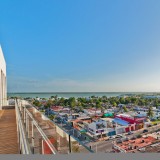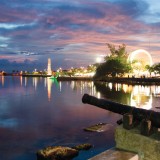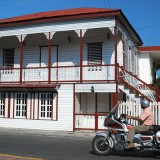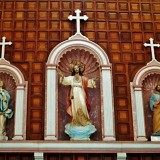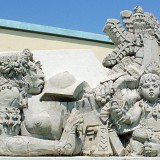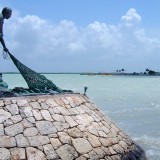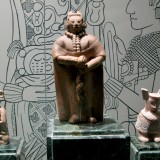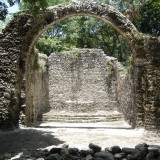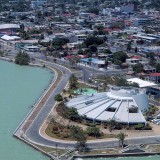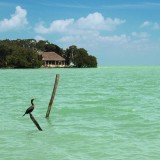loading
City Museum
With the help of photographies, utensils and documents, the museum tells the story of the creation of Chetumal, from its origins, the Caste War, the arrival of Othón Pompeyo Blanco, all the way to modern days.
Yook´ol Kaab Planetarium
Since it was inaugurated in 2011, its goal has been to spread information about astronomy and other related sciences to create interest among students and people in general, by motivating creative thinking. There is also an auditorium for 190 persons, a room about Mayan cosmovision, another one for temporary exhibitions and a botanical garden.
Governement Palace
This ArtDéco building started under Rafael Melgar government (1935-1940) and was concluded under Margarito Ramírez´ government (1944-1959). It was then remodeled and some sections were extended.
Scale Model Museum of Payo Obispo
Designed by Luis Reinhard, it is a scale model that reproduces the old town of Payo Obispo, founded in 1898. In 1915 the town became the capital of Quintana Roo, and it has been called Chetumal since 1936. The museum gives visitors an idea of the lifestyle of old days.
Museum of Mayan Culture
The museum provides information about the life of the pre-hispanic Maya, as well as about their calendar system and their cosmovision. The museum has a special room for temporary exhibitions.
The Flag Esplanade
Located right next to the bay, it is made of an obelisc with a clock dial on each side; one of the faces bears the names of the main heroes of the Independence, the Reform and the Revolution.
Nautical Club
It has two piers, one is 72 meters long pier and the other one 15 meters long.
Convention Center
Built by Architect Pedro Ramírez Vázquez, the building covers over 29,000 square meters on Boulevard Bahia.
University of Quintana Roo
The University of Quintana Roo has campuses in Chetumal (four divisions), Cozumel, Playa del Carmen and Cancun.
Payo Obispo Zoo
The park is home to around 50 animal species, and also includes recreational services such as rides on a little train, on horseback and small boats. Possibility of guided tours.
Introduction Chetumal
Founded in 1898 under the name of Payo Obispo, Chetumal, the state capital is a classic Mexican Caribbean town, quiet and tropical. Nestled on the shores of a beautiful bay, its surroundings are full of historic, natural and cultural attractions. This is where the first mestizo was supposedly born in the 16th century, the son of a spaniard, Gonzalo Guerrero and Zazil-Há, a Mayan princess.
Chetumal Bay
The bay is a huge inlet of the Caribbean Sea between Mexico and Belize. The Rio Hondo flows into it and it is considered as a Sanctuary for Manatees, a water mammal in danger of extinction. Along the promenade, you will find some of the most important monuments of the city. A boat ride across the bay can take you to Calderitas and Tamalcab Island.
